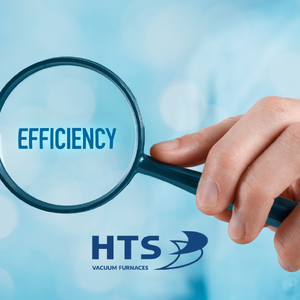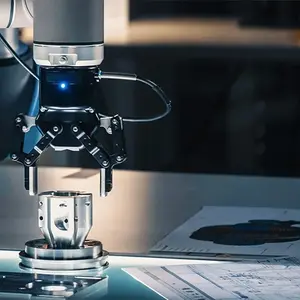The Italian automotive industry is among the most competitive worldwide, and behind every quality component lies a perfectly heat-treated die. In this article, we explore how air and protective atmosphere quenching furnaces are becoming the beating heart of automotive tooling production, ensuring precision, durability, and reliability in the most critical operations.
The challenge of heat treatments in modern automotive
The automotive sector requires dies capable of working millions of cycles while maintaining extremely tight dimensional tolerances. Whether dealing with body panel dies, powertrain components, or safety parts, every tool must pass extreme durability tests without compromising the final product quality.
Modern tool steels, such as hot and cold work steels used in automotive dies, require precise thermal cycles that only specialized furnaces can guarantee. The difference between a die lasting 100,000 pieces and one reaching a million cycles often lies in the quality of heat treatment.
Why protective atmosphere is crucial for automotive dies
1. Surface oxidation control
Automotive dies work under extreme conditions: high pressures, variable temperatures, and continuous cycles that can compromise surface finish. Oxidation during heat treatment can alter die dimensions compromising tolerances, create surface roughness that transfers to stamped parts, and reduce wear resistance in the most stressed areas.
Protective atmosphere furnaces eliminate these risks by precisely controlling atmospheric composition throughout the entire thermal cycle.
2. Treatment uniformity for complex geometries
Modern automotive dies feature increasingly complex geometries: internal cooling channels, shaped surfaces, and variable thicknesses requiring uniform heating. Protective atmosphere ensures uniform heat penetration even in deep cavities, eliminates hot spots that could cause distortions, and controls residual stresses for dimensionally stable dies.
Specialized thermal cycles for automotive applications
Quenching and tempering for blanking dies
Objective: Achieve maximum surface hardness while maintaining core toughness.
Optimal parameters:
- Austenitizing temperature: 1050-1080°C for D2/D6 steels
- Atmosphere: Endogas or nitrogen-methanol to prevent decarburization
- Quenching: Oil or aqueous polymers for distortion control
- Tempering: 150-200°C for 58-62 HRC hardness
Stress relief treatment for large dies
For large automotive dies, such as those for body panels:
Pre-stress relief cycle:
- Temperature: 650-680°C in neutral atmosphere
- Soaking time: 2-4 hours according to thickness
- Cooling: Controlled at 50°C/hour down to 200°C
This process eliminates machining stresses before final treatment.
Competitive advantages for the automotive industry
Compliance with industry standards
The automotive sector requires rigorous certifications. HTS protective atmosphere furnaces offer complete traceability of every thermal cycle, ISO/TS 16949 compliance for automotive quality, statistical process control for Six Sigma, and complete documentation for OEM customer audits.
Production efficiency and cost reduction
Integration of protective atmosphere furnaces in automotive die production leads to scrap reduction through elimination of post-treatment rework for surface oxidation, increased productivity with optimized cycles reducing processing times by 20-30%, and superior die durability with uniform treatments increasing service life up to 40%.
Technical considerations for furnace selection
Capacity and operational flexibility
Automotive dies vary enormously in size and geometry. The ideal furnace must offer:
Sized work chamber: For dies up to 3000x2000x1500mm High payload: Up to 5000 kg for large panel dies Handling systems: Retractable cars and cranes for heavy loads
Advanced atmospheric control
Endogas generators: For precise carbon potential control Inline analyzers: Continuous monitoring of CO, CO₂, and dew point Safety systems: Gas leak detection and emergency systems
Specific applications in the automotive sector
Body panel dies
For automotive exterior panel production:
- Steels used: P20, 1.2738, 1.2316 modified
- Treatments: Hardening + nitriding for wear resistance
- Critical aspects: Distortion control on large surfaces
Engine component dies
For high-precision powertrain parts:
- Materials: Hot work steels H13, H11
- Thermal cycles: Quenching + double tempering for thermal stability
- Requirements: Thermal fatigue and abrasive wear resistance
Critical machining tools
For safety component dies:
- Standards: Crash test compliance and NCAP regulations
- Materials: Premium steels with aerospace certification
- Quality control: Mandatory non-destructive testing
The future: Industry 4.0 and sustainability
Digital integration
Modern furnaces for automotive dies are evolving toward:
- IoT monitoring: Remote control and predictive maintenance
- AI for optimization: Algorithms for optimal thermal cycles
- Digital twin: Virtual simulation for new process development
Environmental sustainability
- Energy efficiency: Heat recovery systems for consumption reduction
- Reduced emissions: Catalytic combustors for NOx abatement
- Circular economy: Protective atmosphere regeneration
In the automotive sector, where competition is played on cents and quality admits no compromises, protective atmosphere quenching furnaces represent a fundamental strategic investment. The ability to produce dies with optimal metallurgical characteristics, perfect surfaces, and precise dimensions determines the competitive success of industry companies. Evolution toward electrification and new automotive materials will require increasingly performing and precise dies. Those investing today in cutting-edge heat treatment technologies build the foundations for tomorrow's technological leadership. Choosing the right furnace is not just a technical decision, but a business strategy that directly impacts the competitiveness and profitability of the entire automotive production chain.
For more information on HTS protective atmosphere quenching furnaces specialized for the automotive industry, contact our process experts for a personalized evaluation of your production needs.





